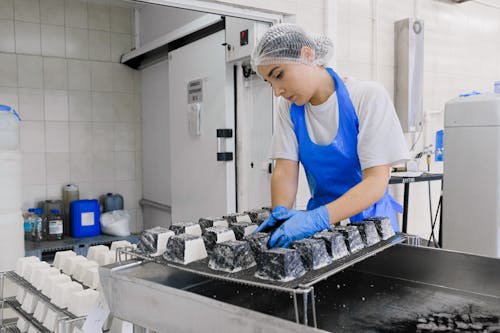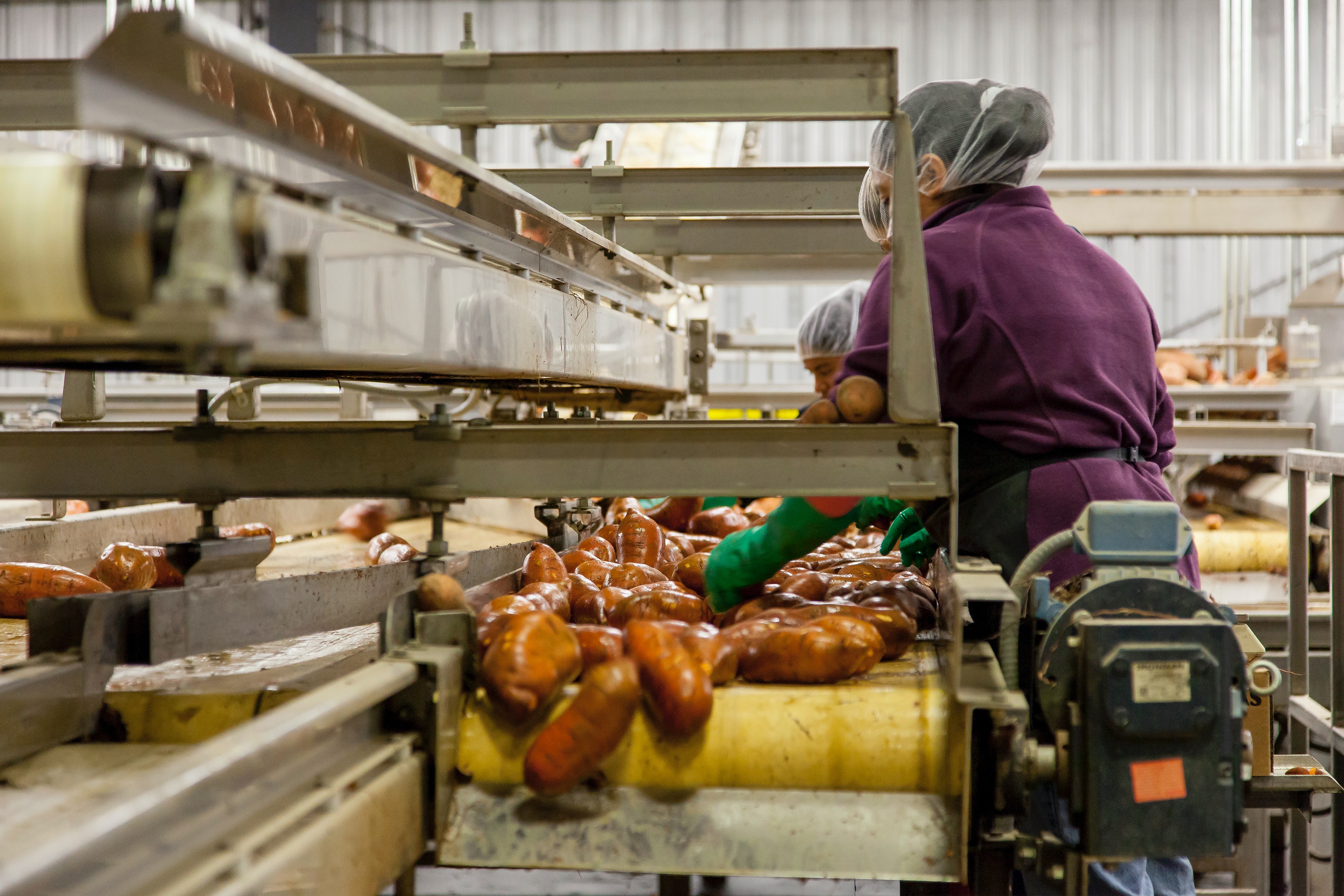Easy access and ready-to-eat meals have become the standard in the modern world. However, behind the ease of use is an important risk to health. Excessive food processing, which involves many ways of changing and purifying meals, can be harmful to human health.
In this post, we will look at the hidden health risks caused by excessive food processing and the importance of choosing smart food choices.

Overview of food processing
Food processing refers to the procedures and methods used to convert raw components into edible products. It includes several tasks like washing, chopping, cooking, preserving, and packing.
specific food processing methods are required for safety and preservation, over-processing can negatively affect the nutritional and general nutritional value of the final products.
Ultra-processed food
What is Ultra Processed Food?
“ultra-processed food” represents a group of food items that undergo a lot of industrial processing and include a variety of ingredients. To improve these meals’ flavour, texture, and shelf life, chemicals, preservatives, and artificial flavours are frequently included in their formulation.
Sometimes, they don’t need much preparation before eating or are ready to eat. Sugary snacks, prepared desserts, processed meats, carbonated beverages, and ready-to-eat meals are examples of ultra-processed foods.
Health Risks Associated with Ultra-Processed Food
1. Poor nutritional profile
Foods that have been through a lot of processing tend to be rich in sodium, added sugars, and harmful fats but lacking in key nutrients. They frequently include low levels of fibre, vitamins, and minerals, which are essential for preserving good health.
Daily use of these foods can result in dietary imbalances and inadequacies, which raises the chance of developing chronic diseases like obesity, diabetes, and cardiovascular problems.
2. Added Calories
Ultra-processed foods are frequently high in calories but low in satisfaction. They are made to be very enjoyable, which can cause people to consume too much and put on weight.
When caloric intake exceeds caloric expenditure, an energy imbalance can result, which can cause weight gain and issues associated with obesity.
3. Impact on Metabolic Health
Eating highly processed foods daily has been associated with a higher risk of developing metabolic syndrome, insulin resistance, and type 2 diabetes.
These types of food often have high levels of harmful fats, refined carbs, and additives, which may cause problems with normal metabolic functions and impair insulin sensitivity and blood sugar regulation.
Related: Type 2 Diabetes: How to understand and treat symptoms.
4. Higher Risk of Chronic Diseases
A diet that is high in ultra-processed foods has been linked in multiple studies to an increased risk of chronic diseases like heart disease, certain cancers, and neurological problems.
Related: Chronic Kidney Disease: 5 Incredibly Effective Ways to Deal With It
These foods’ vitamin deficiencies, chemicals, and harmful components can cause cellular damage, oxidative stress, and inflammation, which may lead to the development of chronic disorders.
Related: Diet and Nutrition: 10 Incredible Ways to enhance your eating habits.
5. Impact on Digestive Health
Food which is heavily processed often does not have nutritional fibre, which is necessary for preserving a healthy digestive system. Lack of fibre can cause digestive problems like bloating, constipation, and an unbalanced microbiome in the stomach.
For overall health, immune system function, and the prevention of gastrointestinal illnesses, a diverse and healthy gut microbiome is essential.
sometimes consuming foods that are highly processed could not hurt your health. An eating plan which consists mainly of these foods can be harmful to your general health and well-being.
Focusing on a diet high in whole, unprocessed foods, such as fruits, vegetables, whole grains, lean meats, and healthy fats is advised to improve health results.
Types of Food Processing
Refining
Refining is a popular food processing procedure in which the outer layers of grains or other raw components are removed. This procedure contributes to the creation of items with a finer texture and a longer shelf life.
However, refining might cause the loss of essential elements including fibre, vitamins, and minerals.
Heating and Cooking

Heating and cooking processes such as boiling, baking, frying, and grilling are critical for making food safe to ingest while also boosting flavour and texture.
Prolonged or high-temperature cooking, on the other hand, can result in nutritional loss and the development of potentially hazardous chemicals, such as acrylamide in fried meals.
Preservation
Storage methods like canning, freezing, and drying are used to increase the shelf life of food goods and keep them from spoiling.
these techniques can help to maintain the nutritional content of food to some extent, key nutrients may still be compromised, and the use of preservatives could lead to health risks.
Additives and Flavorings
Processing food involves the addition of additives like flavours, colourings, and preservatives. These compounds are used to improve the flavour, look, and shelf life of goods.
Overuse of artificial additives can be harmful to your health and may be connected to allergic reactions or other sensitivities.
Packaging
Packaging is important for preserving the safety and quality of processed foods. It increases the items’ shelf life and shields them from contaminants. However, some packaging materials might have chemicals that could contaminate the food and pose health problems.
Not all food processing is bad. In terms of food safety and flavour, some processing methods, such as washing, peeling, or little cooking, may be beneficial. Achieving a balance between processing for safety and preservation and maintaining the food’s nutritional integrity is the key.
Nutrient content of processed food
Loss of Nutrients During Processing
During food processing some vitamins and minerals may be lost significantly decreased. This happens due to several things, including heat, air exposure, light, and mechanical processing. Here are a few examples:
Vitamins and minerals
Processing techniques such as heating, boiling, and long-term storage can lead to the loss or degradation of vitamins and minerals. Water-soluble vitamins, such as vitamin C and the B-complex vitamins, are more prone to loss during processing.
Zinc, magnesium, and potassium are a few more minerals that can be lowered.
4 Incredible Natural Sources of Vitamin K to Incorporate into Your Diet
Fibre
Processed food usually has its fibrous, high-dietary fibre components like peels or bran removed. Because of this, processed foods typically contain less fibre than their unprocessed substitutes.
Phytonutrients
Many kinds of fruits, vegetables, and whole grains are rich in healthy phytonutrients like polyphenols and antioxidants. Unluckily, some processing techniques, such as peeling, refining, or excessive heating, might cause a reduction in these important chemicals.
Nutrients Added During Processing
It is important to keep in mind that while some nutrients may be lost through food processing, other nutrients may also be added to improve the nutritional profile or maintain the stability of processed foods. Here are a few examples:
Fortification
To deal with nutritional deficiencies in people worldwide, fortification involves including particular nutrients in processed foods. Vitamins (including vitamin D, folic acid, and iron) and minerals (such as calcium and iodine) are frequently fortified nutrients.
Enrichment
The restoration of nutrients that may have been lost during processing is the process of enrichment. For example, iron and B vitamins like thiamin, riboflavin, niacin, and folic acid can be added to refined grains like white flour.
Nutrients Added
In certain cases, producers may add nutrients to improve the nutritional value of processed meals. To help make up for any losses during processing, this may include adding vitamins, minerals, or other beneficial substances.
Depending on the particular product and processing methods used, the nutritious content of processed meals can vary greatly. Reading the ingredients on food labels can help you learn essential information about the nutritional value of processed meals.
While depending on processed meals as your main source of nourishment might lead to nutrient shortages, you can still choose healthier options from the processed food category.
Consuming foods with little to no processing, like frozen fruits and vegetables or whole grain goods, will help keep more of the nutrients in their natural state. Additionally, you need to include a variety of fresh, whole foods in your diet if you want to get a variety of nutrients.
Methods of food processing
Canned preservation
A common technique for extending the shelf life of many food goods is canning preservation. Food is packed in airtight containers or cans and heated to high temperatures to kill germs, yeast, and moulds as part of the process. This approach has various advantages, such as:
Long Shelf Life
Foods can have a lengthy shelf life, frequently lasting from a few months to years. The food is kept fresh and secure for a long time because of the airtight seal, which blocks the entry of microorganisms.
Convenience
Canned food is accessible and practical. They are ideal for refrigerator storage and perfect for situations of emergency or times when fresh food may not be easily available because they don’t need to be refrigerated until they are opened.
Nutrient Retention
Because the food is heated to high temperatures during the canning process, some nutrients may be lost. However, due to the lack of oxygen and exposure to light, many nutrients, like vitamins C and A and minerals like lycopene in tomato products, can be kept in good condition.
Freeze Drying
Freeze drying, sometimes called lyophilization, is a food preservation technique that involves getting the moisture out of the food while it is still frozen. The form and nutrients of the food are preserved during this process. Here are some important points about freeze-drying:
Preservation of Nutrients
Food’s nutritional value can be preserved through freeze-drying. This method is to freeze the food, put it under low pressure, and then allow the frozen water inside the meal to sublimate (go straight from solid to gas). The vitamins, minerals, and other nutritional components of the food are preserved as a result.
Extended Shelf Life
Freeze-dried foods have a longer shelf life because moisture is removed, which prevents the growth of germs that can lead to deterioration. If stored under the right conditions, properly freeze-dried goods can remain stable for several years.
Lightweight and Convenient
Since freeze-dried foods are lightweight and easy to carry, they are preferred by travellers, trekkers, and other people who need to pack light for travel or outdoor activities. Without affecting the food’s nutritious content, the weight of the food is greatly reduced when the water is removed.
While this method of processing gives many benefits of convenience and preservation, it may also cause some nutritional loss or change the texture or flavour of the food.
In addition, the specific item and processing methods used may impact the quality and nutritional content of processed foods.
Making intelligent choices regarding the foods we eat can be achieved by reading labels, understanding the components, and selecting less processed ones
Environmental impact of food processing
Employing Packaging
In food processing, packaging is used widely to protect and preserve the safety and quality of food products. But it also has an effect on the natural environment. In terms of the usage of packing, keep in mind the following:
Waste Production
Plastic containers, wrappers, and boxes used for food packing all add to the production of waste. Packaging waste should be disposed of properly to prevent pollution and littering that harm environments and wildlife.
Recycling and sustainability
There are numerous efforts ongoing to encourage recycling and the use of environmentally friendly packaging materials. Efforts to recycle and the use of biodegradable or recyclable containers may help reduce the harmful effects of the food processing industry.
Energy Consumption
Energy is required for food processing processes such as heating, cooling, freezing, and packing. Considerations for energy use include the following:
Emissions of Greenhouse Gases
The energy needed to process food often comes from fossil fuels, which results in the release into the environment of greenhouse gases. Both air pollution and climate change are affected by these gases.
Energy Efficiency
Using electricity-efficient procedures and tools may help lower the amount of energy used in processing plants for food. This involves making equipment more efficient, implementing energy-saving technology, and employing renewable energy sources whenever practical.
Water consumption
Water is an essential resource for preparing food, and its use can have an impact on the environment. Take note of the following information on water consumption:
Water Scarcity
The cleaning, rinsing, and processing processes involved in food processing require huge amounts of water. A lot of water use can put a burden on water supplies, especially in areas where shortages of water are a problem.
Water Treatment and Discharge
To avoid harming water bodies, food manufacturing facilities must properly treat and discharge their wastewater. The effect on the environment is reduced with the use of filtration and treatment systems for wastewater management.
Who invented food processing?
Techniques for preparing food have changed over time thanks to the work of innovators like Nicolas Appert and Louis Pasteur.
What is food processing and its purpose?
The term “food processing” refers to a variety of processes and procedures used to turn raw materials into processed foods. Its goals are to increase customer convenience, extend the shelf life of food, improve flavour and texture, and increase food safety.
What is the food processing type?
To turn raw materials into finished goods, food is processed using techniques including preservation, heat treatment, mechanical processing, and packaging.
Conclusion
Food processing has both advantages and disadvantages. On the positive side, it provides convenience, better food safety, extended shelf life, and a large selection of food choices. There are, however, disadvantages to take into account.
Problems with processing food include nutrient loss during processing, the presence of chemicals and preservatives, the possibility of food-healthy substances, and their effect on the environment.
Finding a balance in our diets by including whole foods and minimally processed meals can help us gain advantages while reducing the possible hazards.
A healthy and sustainable strategy for nutrition can be supported by being aware of food choices, reading labels, and giving fresh and nutrient-rich foods a priority. It’s essential to consult a professional for individualised dietary recommendations.


